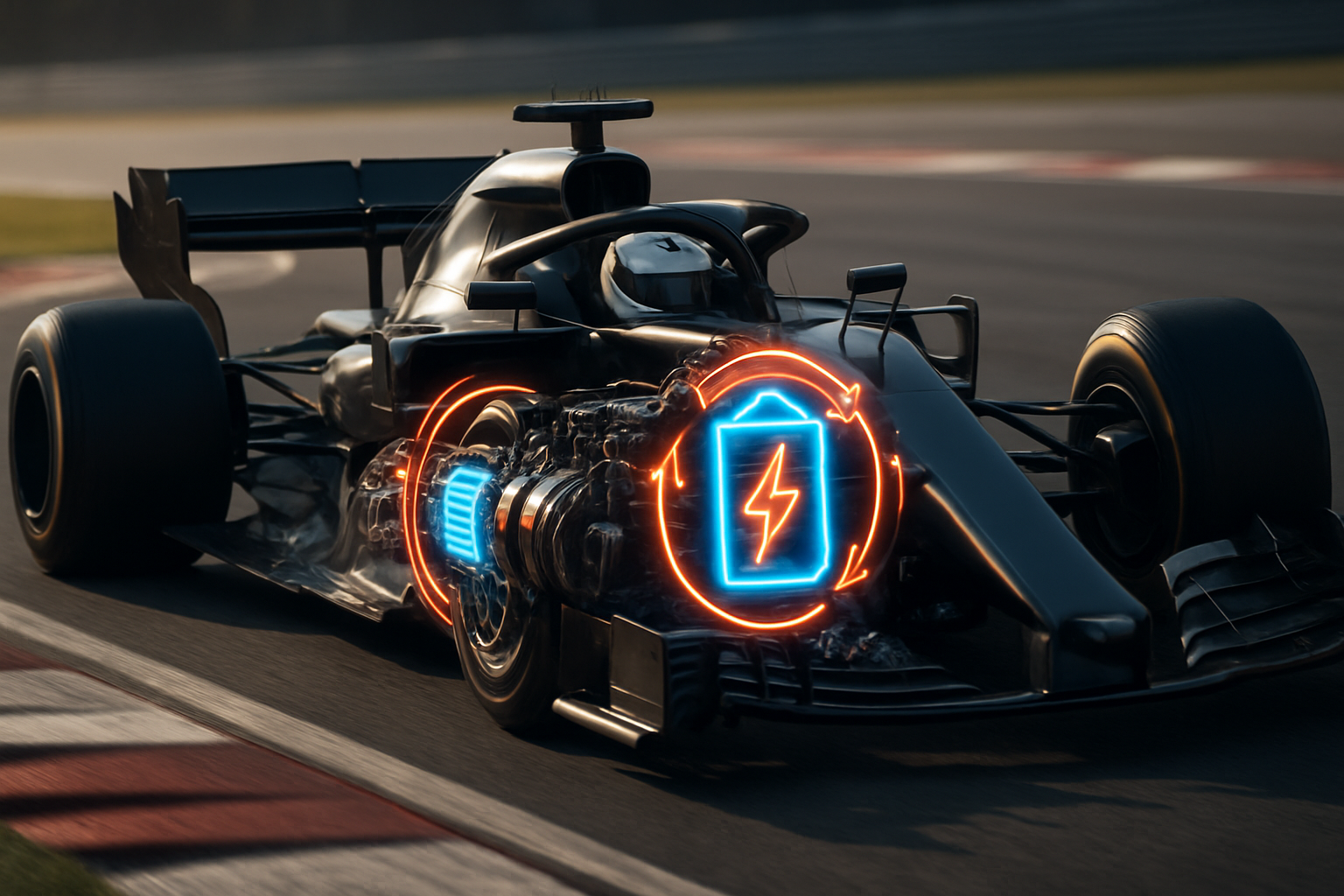Kinetic Energy Recovery Systems: Redefining Racing Efficiency
The world of motorsports is constantly evolving, pushing the boundaries of automotive technology and performance. One innovation that has been making waves in recent years is the Kinetic Energy Recovery System (KERS). This groundbreaking technology is revolutionizing the way racing cars harness and utilize energy, offering a glimpse into the future of high-performance driving.

The Birth of KERS: From Concept to Reality
The concept of energy recovery in vehicles dates back to the early 20th century, with regenerative braking systems appearing in electric vehicles as early as the 1900s. However, the modern KERS as we know it today began to take shape in the early 2000s, driven by the desire to improve efficiency and performance in high-stakes racing environments.
Formula 1 played a pivotal role in the development and popularization of KERS. In 2009, the Fédération Internationale de l’Automobile (FIA) introduced regulations allowing the use of KERS in F1 cars, marking a significant milestone in the technology’s evolution. This move not only spurred rapid advancements in KERS technology but also highlighted its potential for improving both performance and energy efficiency.
How KERS Works: A Symphony of Engineering
At its core, KERS operates on a simple principle: converting kinetic energy into a storable form and then releasing it when needed. However, the engineering behind this process is anything but simple. There are two main types of KERS: electrical and mechanical.
Electrical KERS uses a motor-generator unit connected to the drivetrain. During braking, this unit acts as a generator, converting kinetic energy into electrical energy, which is then stored in a battery or supercapacitor. When the driver needs an extra boost, this stored energy is fed back through the motor-generator, which now acts as a motor, providing additional power to the wheels.
Mechanical KERS, on the other hand, typically uses a flywheel to store energy. As the vehicle decelerates, the flywheel spins up, storing kinetic energy. This energy can then be transferred back to the wheels when acceleration is required, providing an instant power boost.
The Impact on Racing: Speed, Strategy, and Sustainability
The introduction of KERS in motorsports has had a profound impact on racing dynamics. In Formula 1, for instance, KERS has added a new layer of strategy to races. Drivers must now decide when to deploy their energy boost for maximum advantage, whether it’s for overtaking, defending a position, or shaving crucial seconds off lap times.
Moreover, KERS has contributed to making motorsports more environmentally conscious. By recapturing energy that would otherwise be wasted, these systems improve overall efficiency, reducing fuel consumption and emissions. This aligns with the growing push for sustainability in motorsports and the automotive industry at large.
Beyond the Track: KERS in Road Cars
While KERS has made its most notable impact in racing, its potential extends far beyond the track. Automakers are increasingly exploring ways to incorporate KERS-like technologies into road cars, aiming to improve both performance and fuel efficiency.
Some high-performance road cars already feature systems inspired by KERS. These systems not only provide a performance boost but also contribute to improved fuel economy, especially in urban driving conditions where frequent braking occurs. As the technology continues to evolve and become more cost-effective, we can expect to see more widespread adoption in mainstream vehicles.
Challenges and Future Developments
Despite its promising potential, KERS is not without its challenges. The added weight and complexity of these systems can be a drawback, particularly in racing where every gram counts. Additionally, the high costs associated with developing and implementing KERS technology have limited its widespread adoption in road cars.
However, ongoing research and development are addressing these challenges. Engineers are working on lighter, more compact KERS designs, as well as exploring new materials and energy storage solutions to improve efficiency and reduce costs.
Looking ahead, the future of KERS appears bright. As the automotive industry continues its shift towards electrification and increased efficiency, technologies like KERS are likely to play an increasingly important role. We may see more advanced hybrid systems that seamlessly integrate KERS-like functionality, or even entirely new energy recovery concepts inspired by the success of KERS in motorsports.
In conclusion, Kinetic Energy Recovery Systems represent a significant leap forward in automotive technology. From its roots in racing to its potential applications in everyday vehicles, KERS embodies the innovative spirit driving the automotive industry forward. As we continue to push the boundaries of what’s possible in vehicle performance and efficiency, KERS stands as a shining example of how ingenious engineering can turn wasted energy into a powerful asset, both on the track and on the road.





